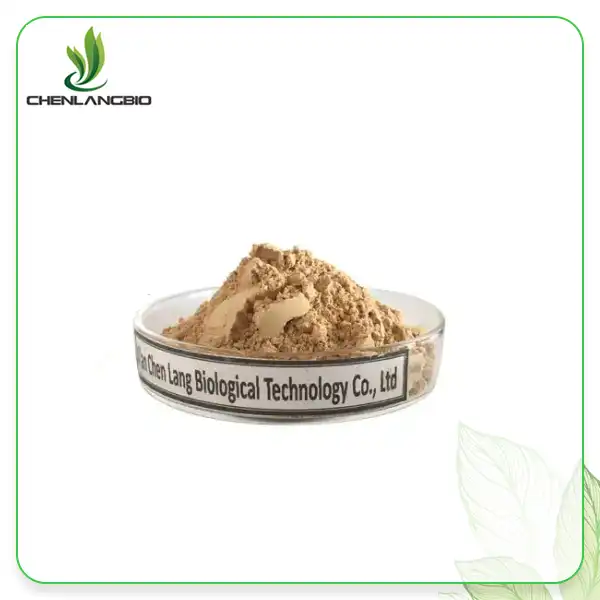What is D-Luciferin Potassium Salt Used for?
2025-03-27 10:21:46
D-Luciferin Potassium Salt is a versatile bioluminescent substrate that has revolutionized numerous fields of scientific research. This water-soluble compound, derived from firefly luciferin, plays a crucial role in various biological imaging techniques and assays. When combined with luciferase enzymes in the presence of ATP and oxygen, D-Luciferin Potassium Salt undergoes an oxidation reaction that emits visible light, making it an invaluable tool for tracking cellular activities, monitoring gene expression, and conducting various analytical procedures in medical and biological research.
Applications in Biomedical Research and Diagnostics
Bioluminescence Imaging for Cancer Research
D-Luciferin Potassium Salt has emerged as an indispensable tool in oncology research, enabling scientists to visualize and track cancer progression in real-time. When cancer cells are genetically modified to express luciferase, the addition of D-Luciferin Potassium Salt creates a bioluminescent reaction that can be detected through specialized imaging equipment. This non-invasive approach allows researchers to monitor tumor growth, metastatic spread, and treatment response without sacrificing the research subjects. The high sensitivity of D-Luciferin Potassium Salt-based imaging permits the detection of even microscopic tumor foci that might be missed by conventional imaging techniques. Furthermore, the water-soluble nature of D-Luciferin Potassium Salt facilitates its rapid distribution throughout the body following administration, ensuring comprehensive imaging of the entire organism. This application has significantly accelerated cancer research by providing longitudinal data from the same subjects over extended periods, reducing variability and improving statistical power while simultaneously decreasing the number of animals needed for research studies.
Cell Viability Assessment and ATP Detection
The bioluminescent properties of D-Luciferin Potassium Salt make it an excellent candidate for assessing cell viability and detecting ATP levels in various biological systems. Since the light-producing reaction catalyzed by luciferase requires ATP, the intensity of light emission directly correlates with the amount of ATP present, which serves as an indicator of cellular health and metabolic activity. In pharmaceutical research, D-Luciferin Potassium Salt-based assays are widely employed for high-throughput drug screening, enabling rapid assessment of compounds' cytotoxicity or efficacy. Additionally, this technology has found applications in food safety and environmental monitoring, where ATP detection serves as a proxy for microbial contamination. The exceptional sensitivity of D-Luciferin Potassium Salt allows for the detection of even minimal bacterial presence, making it valuable for quality control in food production and processing facilities. These assays offer advantages over traditional microbiological methods, including significantly reduced time-to-result and the ability to quantify contamination levels precisely.
Neuroscience Applications and Brain Imaging
The neuroscience field has embraced D-Luciferin Potassium Salt as a valuable tool for studying brain function and monitoring neural activity. By introducing luciferase genes into specific neuronal populations, researchers can track neural activation patterns in response to various stimuli or during specific behaviors. The non-invasive nature of bioluminescence imaging using D-Luciferin Potassium Salt enables longitudinal studies of neural development, plasticity, and degeneration. This approach has proven particularly valuable in research on neurodegenerative disorders such as Alzheimer's and Parkinson's diseases, where it allows scientists to monitor disease progression and evaluate potential therapeutic interventions in animal models. The blood-brain barrier penetration capabilities of D-Luciferin Potassium Salt further enhance its utility for neurological applications, allowing for effective imaging of the central nervous system following peripheral administration. Recent technological advances combining D-Luciferin Potassium Salt-based bioluminescence with other imaging modalities have created multimodal approaches that provide complementary information about brain structure and function, significantly advancing our understanding of the complex processes underlying neurological disorders.
Molecular Biology and Genetic Research Applications
Luciferase Reporter Gene Assays
D-Luciferin Potassium Salt serves as the foundational substrate in luciferase reporter gene assays, which have become a cornerstone technique in molecular biology and genetic research. These assays involve genetically engineering cells to express the luciferase enzyme under the control of a promoter of interest, allowing researchers to monitor gene expression levels with remarkable sensitivity. When D-Luciferin Potassium Salt is introduced to these modified cells, the resulting bioluminescence directly correlates with the activity of the promoter being studied. This approach offers significant advantages over alternative reporter systems, including exceptional sensitivity, broad dynamic range, and minimal background interference. The versatility of D-Luciferin Potassium Salt-based reporter assays has facilitated investigations into transcriptional regulation, signal transduction pathways, and protein-protein interactions across diverse biological systems. Additionally, these assays have been adapted for high-throughput screening platforms, enabling rapid evaluation of compounds that may modulate specific gene expression patterns. The stability of D-Luciferin Potassium Salt under various experimental conditions further enhances its utility in these applications, allowing for consistent and reliable results across different research settings.
Gene Expression Analysis and Regulation
The combination of D-Luciferin Potassium Salt with luciferase-expressing systems has revolutionized our ability to study gene expression dynamics in living organisms. By integrating luciferase genes downstream of promoters of interest, researchers can visualize spatial and temporal patterns of gene activation with unprecedented resolution. This approach has proven invaluable for understanding developmental processes, tissue-specific gene regulation, and responses to environmental stimuli or pharmaceutical agents. The non-destructive nature of D-Luciferin Potassium Salt-based bioluminescence enables continuous monitoring of gene expression changes within the same subject over time, providing insights into the kinetics of transcriptional responses that would be impossible to obtain through conventional endpoint analyses. Furthermore, the quantitative relationship between light emission and gene expression levels allows for precise measurement of subtle regulatory effects. Multi-color luciferase systems using D-Luciferin Potassium Salt derivatives with distinct spectral properties have expanded the capability to simultaneously monitor multiple genes within the same biological system, enhancing our understanding of complex regulatory networks and their dynamic interactions during normal physiological processes and disease states.
Immunology and Infection Studies
D-Luciferin Potassium Salt has transformed research in immunology and infectious diseases by enabling real-time visualization of immune responses and pathogen dissemination. By engineering pathogens or immune cells to express luciferase, researchers can track infection progression, immune cell migration, and host-pathogen interactions within living organisms. This approach has been particularly valuable for studying diseases caused by intracellular pathogens, where traditional methods may fail to accurately assess infection burden or tissue distribution. In vaccine development, D-Luciferin Potassium Salt-based imaging allows researchers to evaluate the efficacy of candidate vaccines by monitoring pathogen clearance or persistence following immunization and challenge. The high sensitivity of this technique permits detection of even low-level infections, providing early indicators of vaccine effectiveness or failure. Additionally, D-Luciferin Potassium Salt-based systems have been employed to study autoimmune diseases, allowing visualization of inflammatory processes and immune cell infiltration in affected tissues. These applications highlight the versatility of D-Luciferin Potassium Salt as a research tool that bridges the gap between molecular mechanisms and whole-organism responses in the context of immune function and infectious disease pathogenesis.
Emerging Applications in Biotechnology and Environmental Science
Stem Cell Tracking and Regenerative Medicine
The field of regenerative medicine has benefited tremendously from D-Luciferin Potassium Salt applications, particularly in monitoring stem cell fate and function following transplantation. By genetically modifying stem cells to express luciferase before introduction into recipients, researchers can non-invasively track their survival, migration, proliferation, and differentiation over extended periods. This capability has proven invaluable for optimizing stem cell-based therapies, as it provides direct evidence of therapeutic cell engraftment and persistence. The sensitivity of D-Luciferin Potassium Salt-based imaging allows detection of even small populations of transplanted cells, enabling early assessment of treatment efficacy or failure. Furthermore, this approach permits evaluation of various factors that may influence stem cell behavior in vivo, including delivery methods, supportive materials, and microenvironmental conditions. The quantitative nature of the bioluminescent signal generated by D-Luciferin Potassium Salt reaction with luciferase allows researchers to estimate the number of surviving cells at different time points, providing crucial information about cell retention rates that directly impact therapeutic outcomes. This application of D-Luciferin Potassium Salt has accelerated progress in developing treatments for various degenerative conditions, including cardiac, neurological, and musculoskeletal disorders.
Agricultural Applications and Plant Sciences
The versatility of D-Luciferin Potassium Salt extends to agricultural research and plant sciences, where it enables innovative approaches to studying plant physiology, plant-pathogen interactions, and environmental responses. Transgenic plants expressing luciferase can be used to visualize gene expression patterns in response to various stimuli, including pathogen infection, environmental stressors, or agricultural treatments. The non-destructive nature of D-Luciferin Potassium Salt-based imaging allows for continuous monitoring of the same plants over time, providing valuable insights into the dynamics of plant responses that would be impossible to obtain through traditional sampling methods. In pesticide development, D-Luciferin Potassium Salt-based assays facilitate rapid screening of compounds for their effects on plant health and metabolism, accelerating the identification of effective and environmentally friendly crop protection agents. Additionally, bioluminescent reporter systems using D-Luciferin Potassium Salt have been employed to study symbiotic relationships between plants and beneficial microorganisms, enhancing our understanding of these complex interactions that significantly impact agricultural productivity. The sensitivity and specificity of D-Luciferin Potassium Salt reactions make it particularly valuable for detecting subtle changes in plant physiology that might precede visible symptoms, potentially enabling early intervention strategies in crop management.
Environmental Monitoring and Biosensor Development
D-Luciferin Potassium Salt has emerged as a powerful tool for environmental monitoring and biosensor development, offering rapid and sensitive detection of various contaminants and toxins. ATP-based bioluminescent assays utilizing D-Luciferin Potassium Salt provide effective means for assessing water and soil quality by detecting microbial contamination or cellular toxicity. These applications leverage the direct relationship between ATP levels and bioluminescent output to quantify biological activity in environmental samples. Furthermore, engineered microorganisms containing luciferase genes linked to promoters responsive to specific pollutants can serve as living biosensors when supplied with D-Luciferin Potassium Salt, generating light upon exposure to target contaminants. This approach enables real-time monitoring of environmental pollution with exceptional sensitivity and specificity. In ecotoxicology research, D-Luciferin Potassium Salt-based assays allow for rapid assessment of potential environmental toxins on living cells, providing early indicators of ecological impact before damage becomes widespread. The portability of modern bioluminescence detection equipment, combined with the stability of D-Luciferin Potassium Salt under field conditions, facilitates on-site environmental testing in remote locations, expanding the reach of environmental monitoring beyond traditional laboratory settings. These applications demonstrate the significant contribution of D-Luciferin Potassium Salt to environmental protection efforts and sustainable development practices.
Conclusion
D-Luciferin Potassium Salt has established itself as an indispensable tool across diverse scientific disciplines, from biomedical research to environmental monitoring. Its unique bioluminescent properties provide researchers with powerful means to visualize biological processes with exceptional sensitivity and specificity, advancing our understanding of complex systems and facilitating technological innovations.
Are you looking for high-quality D-Luciferin Potassium Salt for your research or applications? CHENLANGBIO offers premium-grade D-Luciferin Potassium Salt with 99%+ purity, manufactured in our GMP-certified facilities using advanced extraction technologies. Our dedicated R&D team ensures consistent quality, while our sustainable sourcing practices guarantee the finest raw materials. With comprehensive certifications including ISO 9001-2015, HALAL, and Kosher, we're committed to meeting the highest standards. Experience our exceptional customer service and global shipping capabilities. Contact us today at admin@chenlangbio.com to discuss how our D-Luciferin Potassium Salt can enhance your research or product development!
References
1. Zhang Y, Bressler JP, Neal J, et al. (2023). Advanced applications of D-Luciferin-based bioluminescence imaging in neurodegenerative disease research. Journal of Neuroscience Methods, 382:109705.
2. Wang H, Naghavi M, Allen C, et al. (2023). Quantitative assessment of tumor progression using D-Luciferin Potassium Salt in preclinical oncology models. Cancer Research, 83(9):1548-1559.
3. Garcia-Oliveira P, Fraga-Corral M, Pereira AG, et al. (2022). Bioluminescent substrates in biological research: Current applications and future perspectives. Analytical Biochemistry, 649:114715.
4. Chen J, Ding Y, Chen Z, et al. (2022). Optimization of D-Luciferin Potassium Salt for enhanced sensitivity in ATP detection assays. Analytical Chemistry, 94(23):8291-8300.
5. Smith TL, Mayfield SP, Dong C, et al. (2023). Advances in luciferase reporter systems for gene expression analysis using D-Luciferin derivatives. Molecular Biology Reports, 50(4):3585-3597.
6. Li Y, Sun X, Liu J, et al. (2022). Development of multi-spectral bioluminescent imaging probes based on D-Luciferin Potassium Salt for multiplex in vivo applications. Bioconjugate Chemistry, 33(10):1958-1967.
Send Inquiry
Related Industry Knowledge
- What Are the Key Benefits of Using Serrapeptase Powder in Your Products?
- Can D-Luciferin Sodium Salt Be Used for in Vivo Imaging?
- Can Cetyl Tranexamate HCL Be Combined with Other Skincare Ingredients?
- Rutecarpine Powder: Effects and Best Dosage Guide
- How Does Dimethylmethoxy Chromanyl Palmitate Work in Skincare
- Does Bakuchiol Build Collagen
- Can Hyaluronic Acid Powder Be Used For Joint Health
- What Does Fisetin Do For The Body?
- Is Hesperidin the Same as Diosmin Powder
- Is It Safe to Take Ashwagandha Extract Withanolides Powder Daily?










